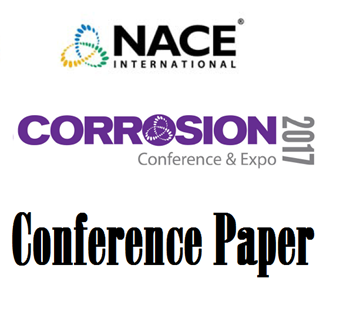Search
Products tagged with 'microbiologically influenced corrosion'
View as
Sort by
Display
per page
Microbial Corrosion Diagnosis Using Molecular Microbiology Methods: Case Studies
Product Number:
MPWT19-14427
Publication Date:
2019
$0.00
Microbiologically Influenced Corrosion (MIC) by Halophilic (Salt-Loving) Nitrate and Sulfate-Reducing Microorganisms
Product Number:
51321-16284-SG
Publication Date:
2021
$20.00
Microbiologically Influenced Corrosion (MIC) in the Upstream Oil & Gas Sector
Product Number:
37674-POD
ISBN:
978-1-57590-424-5
$125.00
Microbiologically Influenced Corrosion by General Aerobic and Anaerobic Bacteria in Oil & Gas Separators
Product Number:
51320-14365-SG
Publication Date:
2020
$20.00
Microbiologically Influenced Corrosion In Drinking Water Pipelines – Old Deposits Or Active Process?
Product Number:
51322-18068-SG
Publication Date:
2022
$20.00
NACE Publication 08113-2013-SG, "Corrosion Problems and Renewal Technologies in Municipal Wastewater Systems"
Product Number:
24251-SG
Publication Date:
2013
$109.00
Novel Multiport Flow-Column Corrosion Monitoring System (MFC) Revealed High Corrosion Rates by Corrosive Methanogenic Archaea
Product Number:
51321-16303-SG
Publication Date:
2021
$20.00
Remediation of Microbially Contaminated Horizontal Wells with Acrolein
Product Number:
51320-14992-SG
Publication Date:
2020
$20.00
Severe microbiologically influenced corrosion (MIC) of pure zinc and galvanized steel in the presence of Desulfovibrio vulgaris
Product Number:
51320-14537-SG
Publication Date:
2020
$20.00
The Importance of Deposit Characterization in Mitigating UDC and MIC in Dead Legs
Product Number:
51317--9128-SG
ISBN:
9128 2017 CP
Publication Date:
2017
$20.00
TM0194-HD1994-SG Field Monitoring of Bacterial Growth in Oilfield Systems-HD1994
Product Number:
21224-HD1994
Publication Date:
1994
$179.00
TM0212-2018-SG Detection, Testing, and Evaluation of Microbiologically Influenced Corrosion on Internal Surfaces of Pipelines
Product Number:
21260-SG
ISBN:
1-57590-255-9
Publication Date:
2018
$109.00












